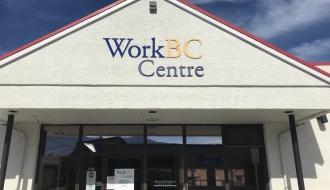Definitions
New job seekersNew workers who are added to the labour market in a region during a certain period. Examples of new job seekers: people who leave the school system and enter the labour market for the first time; migrant workers who move into the region; others looking for work as a result of layoffs elsewhere, cyclical changes in the economy, seasonal changes in labour demand or similar reasons. |
OccupationA grouping of jobs or types of work that have similar skills and responsibilities. Types of jobs are classified based on the amount of skill or training needed to do them, as well as on the specific characteristics of the job. Examples of occupations: health-care worker, school teacher, electrician, lawyer. |
On-the-job trainingAcquiring knowledge and skills while working, by performing tasks under the supervision of a person who has already acquired the knowledge or skill. |
OutsourcingHiring someone from outside an organization to perform a task for an agreed fee over a set period. |
Part-time employeeA person whose job involves less than 30 hours a week. |
PopulationAll the people living in a particular country, region, place or area. |
Postgraduate(a) An advanced level of education beyond completion of a bachelor’s degree, such as a master’s or doctorate degree. |
Post-secondary educationFurther education undertaken after completion of high school. |
Post-secondary institutionInstitution of higher education beyond the high school level, offering degree and certificate programs of study from one to five years in length, as well as postgraduate studies. |
PrerequisitesThe previous education, training, experience, individual abilities, skills or qualifications that a person requires if he or she wants to undertake a particular program of study. |
Primary industriesIndustries that involve the harvesting or extraction of natural resources. Examples of primary industries: fishing, logging, mining, oil and gas extraction, and agriculture. |
Private sectorThe part of the economy that is not under direct government control. In general, private-sector businesses are funded by commercial profit, not by government funding. |
Production processThe steps involved in creating an industry’s final product. For example, in millworking, to make doors, the production process would include:
|
ProductivityA measure of the overall efficiency of the economy. Productivity can be improved through advances made in technology or through the more efficient use of labour or capital inputs. Labour productivity: The relationship between the amount of goods and services produced and the labour used. |
ProfessionAn occupation that requires specialized skills and advanced training. |
Professional associationAn organization that represents members of a professional occupation and that may set educational and training standards and a professional designation. |
ProjectionAn anticipation of what would likely occur based on past trends modified to account for possible future changes. A projection should be viewed as one scenario that incorporates certain conditions that may not be the most likely to occur. See Forecast. |
Public sectorThe part of the economy that involves central government. The public sector includes all the people and organizations (e.g., ministries, Crown corporations, health authorities, public schools and universities) that provide public goods and services, from highways and water and sewage facilities to health care and education. |
RecessionA decline in economic growth for at least six consecutive months. A recession is shorter than a depression. |
RecruitmentThe task in a business or industry of posting job vacancies, collecting and screening applications, and arranging interviews. Often includes identifying target groups, such as post-secondary graduates and underrepresented populations (e.g., women), to which the business or industry can market its employment opportunities. |
Red SealThe nationally registered trademark symbol of the Interprovincial Standards Program, used to signify interprovincial qualification of tradespersons at the journey level. The symbol is affixed to provincial and territorial Certificates of Apprenticeship and Qualification earned by apprentices and tradespersons who have met the national standard in a Red Seal trade. With the Red Seal qualification, the holder may work anywhere in Canada without having to write further examinations. |
Regions, developmentSee Development regions. |
RegistrationThe requirement of a person to be officially approved by and listed with an overseeing organization before being able to work in a particular profession or trade. For example, teachers, plumbers and many medical professionals must be registered before they can legally work. In some professions and trades, registration must be renewed every year. |
Resource-based industriesIndustries that involve the harvesting, extraction and processing of natural resources. Resource-based industries include all of the primary, and some of the secondary, manufacturing industries. |
ResourcesMaterials, people, equipment and machinery needed to produce goods and services. |






